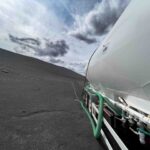
Step-By-Step Installation Guide For Aircraft Hardware Kits
Aircraft hardware kits have a number system that allows you to identify each piece by specification, letter, and dash numbers. This lets you read your plans or assembly manual and get the right hardware for your project.
Most aircraft bolts have an AN or MS number that includes the pin size or screw, such as AN381-2-2 for a cadmium-plated cotter pin.
Cotter Pins
There are many types of cotter pins, and the choice depends on the application. The most common is the split cotter pin, which has a deformable tine on one end that takes up any play in clevis or castle nuts. These are meant for a one-time installation and come in multiple individual styles based on the wire bend and terminus.
Other cotter pins are more like safety pins or even hairpin clips. These resemble their household namesakes but are industrial fasteners with a secure locking mechanism. They are ideal for applications prone to vibration, requiring less bending to lock in place.
Spring cotter pins also use a wavy leg to produce tension for added gripping power when the pin may be exposed to humidity, salt or chemicals. These are usually used for critical components that need a little extra security. A technique shown in a recent EAA Hints for Homebuilders video involves orienting the tails of the cotter pin sideways to prevent them from catching on to something they shouldn’t.
Castle Nuts
One of the components featured in aircraft hardware kits is the castellated nut. This type of nut is also referred to as a castle nut or shear nut, and is utilized in combination with bolts and threaded pins that are prone to experiencing shearing stresses. The nut is fashioned with slots that are intended to align with a cotter pin, which is then bent around the nut to prevent the nut and bolt/pin connection from rotating.
Castle nuts are often preferred over plain hex nuts because they provide extra security in vibration-prone applications. They are especially well-suited to attaching flight and engine control linkages, which can have extreme vibration or frequent load reversals.
Although they look very similar, castle nuts are distinctly different from slotted nuts. They have rounded extensions on top that resemble turrets and host slots, which allow for a locking pin to be placed to prevent loosening. Unlike the hex-shaped slots found on slotted nuts, those of a castle nut are positioned within the peaks of the nut and are, therefore, not accessible with a hex wrench.
Bolts
Sometimes, a builder may be tempted to dash off to the hardware store for a bolt of the right size. But a few dollars saved here and there can add to many headaches, lost time, and even a possible plane crash due to a wrong fastener used for an application.
Aircraft bolts are marked with letters and numbers that identify them by specification. This system lets you read your plans or assembly manual and quickly locate the correct bolt for a given application.
Bolts are also identified by shank diameter and length. An AN3-16A bolt, for example, has a shank diameter of 3/16 inches and a length (not counting the head) of 11/32 inches. The “A” indicates the bolt has a hole in the head for safety wire or cotter pin accommodations. Installing aircraft bolts in their fully threaded length is preferred, but there are some applications where a shorter bolt must be used.
Washers
In aircraft hardware, most parts are identified by a system of numbers. For example, hex-head bolts are AN 3 through AN 20; clevis bolts are AN 21 through AN 49; eye bolts are AN 42 through AN 49. This standardized part-numbering system makes it relatively easy for an amateur A&P technician to locate the correct piece of hardware in a plan or assembly manual.
A washer is a thin metal disc or plate that’s sandwiched between a threaded fastener and the surface it’s bolted to. It distributes the load of the fastener over a larger area and helps prevent stress-related damage to the material.
Aside from the basic metal disc washers, there are special washers that create a seal, provide an electrical grounding point, align the fastener, hold the fastener captive, insulate, or provide axial pressure to the joint. Generally, the use of these washers should be limited to applications where they are necessary.




